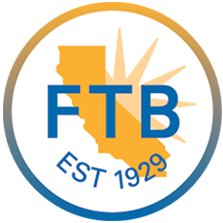
Will your retirement income planning be successful enough to ensure that you can retire at the age you’re thinking of? Do you know how much you actually need and will it be enough? A recent Schwab survey found that the average 401(k) participant thinks they will need about $1.7 million to retire. And nearly half of those surveyed believed that they could meet their retirement plan.
There are significant benefits to having a savings goals, but many Americans are not investing enough to reach their goals. One of the quickest ways to gauge your retirement income planning is to estimate your retirement expenses.
Retire Income Planning – Will It Be Enough?
People rely on various formulas to estimate retirement expenses, all of which is mostly weak guesses. But the well-known 80% rule is a method to use that ensures you’ll have 80% of your pre-retirement income per year in retirement.
This rule is based on the fact that you’ll be able to forego some major expenses after you retire, like commuting and retirement-plan contributions. Of course, some expenses may increase such as vacation travel and, inevitable, health care.
However, many retires report that their expenses for the first few years either equal to or exceeded what they spent before retiring. This can easily happen because retirees generally have more time to go out and spend money.
Other reasons why retirees expenses fluctuate including the following:
1. Standard of living
As humans, we don’t possess wizardry skills, so future expenses are difficult to predict. But the closer you are to retirement, the better idea you probably have of how much money you’ll need to sustain your current standard of living or to support a different one.
Of course, future expenses are hard to predict. But the closer you are to retirement, the better idea you probably have of how much money you’ll need to sustain your current standard of living or to support a different one.
Subtract any expenses that you expect will go away after you retire and add in any new ones you anticipate. Use that as a base. This will at least give you a ballpark figure to work with.
If you anticipate any big bills like home or room remodeling, count those in, too. The same goes for any major cost-savers, such as if you plan to downsize and move to a less expensive home.
2. Retire income
Now that you have some idea of your retirement expenses, the next step is to see whether your income will be enough to cover them. Add up how much income you expect to receive from three key sources:
- Social Security retirement benefits
- Defined-benefit pension plans
- Retirement savings
You probably have enough for retirement if your total retirement income exceeds your predicted expenses when you add it up. But, of course, it wouldn’t hurt to have more.
3. Savings Rate
Having a dollar amount as your long-term savings goal is good but it’s helpful to focus on how much you should put away each year. About 10% to 15% is the historical recommended savings rate. And you can retire comfortably with a 15% savings rate if you start in your mid-20s.
Conclusion
While retirement income planning is not rocket science, it does take know-how and most time professional help. And that’s where The Ray Group’s professional retirement income planning experts come in. Contact us today for an assessment and let’s get you on track for a successful retirement! You can also visit our office, we would love to see you!
You may also enjoy reading: Tax Implications When Turning a Hobby Into a Business





